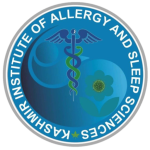Dental sleep medicine
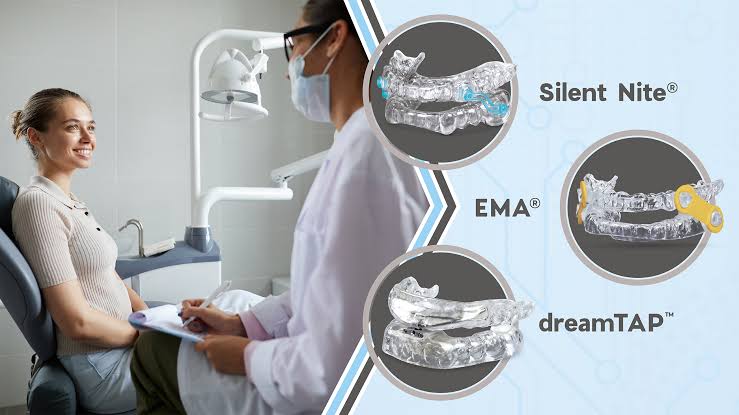
Dental sleep medicine
It’s a relatively new branch of dentistry that treats sleep apnea and other sleep-related breathing problems.
Don’t confuse dental sleep medicine with dental sedation or sleep dentistry. Dental sleep medicine treats sleep apnea.
What Is Sleep Apnea?
Sleep apnea is a malady where you have frequent, recurring gaps in breathing while sleeping. These gaps can last for up to 60 seconds. They are caused by soft tissue in the back of the throat that relaxes and closes the airway. When the brain is not getting enough oxygen it interferes with important physical processes.
There are three different kinds of sleep apnea. They are categorized by the cause of the cessation of breathing. Obstructive sleep apnea is a condition where your throat muscles relax. Central sleep apnea occurs when your brain doesn’t send proper signals to control your breathing. The final type is called complex sleep apnea syndrome. This form is present when a patient has both of the other two types.
How Does a Sleep Apnea Dentist Treat Sleep Apnea?
Dentists use oral appliance therapy to treat obstructive sleep apnea. Patients wear a custom-fitted removable oral appliance at night. The appliance fits somewhat like a sports mouthguard.
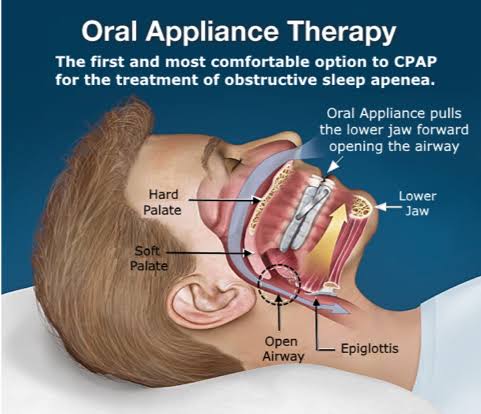
How Does an Oral Appliance Work?
An oral appliance prohibits your airway from collapsing. It either holds the tongue or jaw in a forward position.
How Do I Know If I Have Sleep Apnea?
Sleep apnea must be diagnosed by a medical doctor. If you have several of the following symptoms, we encourage you to see a doctor that specializes in sleep disorders.
Excessive Daytime Sleepiness
Insomnia
Sleep Deprivation
Excessive Snoring
Episodes of Not Breathing
Mouth Breathing
Dry Mouth/Throat
Fatigue
Frequent Headaches
Irritability
Does an Oral Appliance Work as a CPAP Machine?
It depends on the severity of the condition and other factors specific to the patient. Many patients with mild to moderate obstructive sleep apnea benefit from OAT.
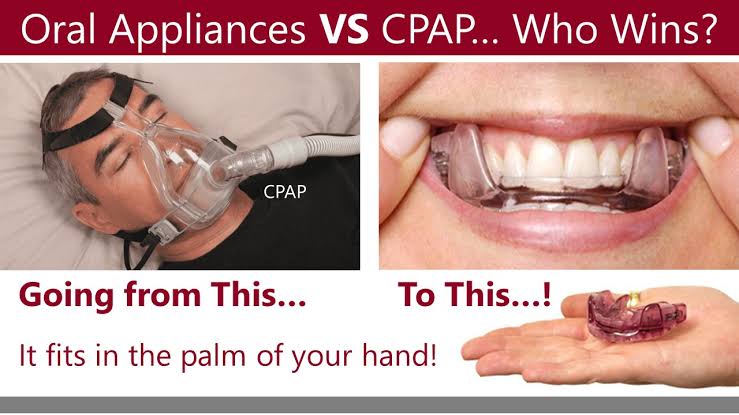
What Are the Advantages of Oat Over CPAP?
Some men and women find the device more comfortable. It’s smaller and easier to clean than a CPAP system. Patients who suffer from claustrophobia often favor OAT. Patients who move around a lot when they sleep can get twisted up in the CPAP tube. And a small, portable device is easier to travel with.
If you have been diagnosed with mild to moderate obstructive sleep apnea and are interested in OAT, give us a call at the number below
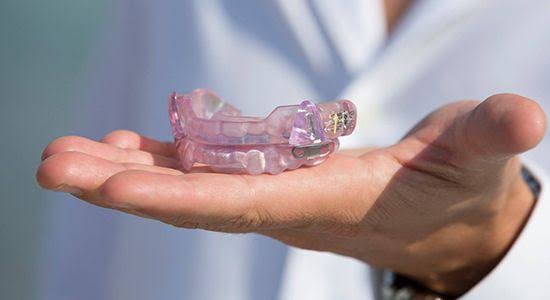
Frequently Asked Questions
People with sleep apnea actually experience oxygen deprivation during their sleep. Loud snoring, waking up gasping or choking, dry mouth or a sore throat on waking up, morning headache, excessive drowsiness during the day, lack of concentration, mood swings, depression, forgetfulness, chronic fatigue, high blood pressure, swelling in the legs etc are the common signs and symptoms of sleep apnea.
Note: Snoring is probably the best and most obvious indicator, but not everyone who snores has apnoea, and not everyone with apnoea necessarily snores (though most do).
OSA is a chronic condition that occurs when your muscles relax during sleep, allowing soft tissue to collapse and block the airway. This can cause you to stop breathing hundreds of times per night for anywhere from a few seconds to more than a minute. Repeated breathing pauses may result in reduced oxygen levels and disturbances in sleep.
Sleep apnea is a sleep disorder in which your breathing is repeatedly interrupted during sleep. Sleep apnea can cause high blood pressure, depression, mood swings, personality changes, irritability, abnormal heart rhythms and an increased chance of heart attack. The most common telltale sign of obstructive sleep apnea is loud snoring, but not everyone who snores suffers from obstructive sleep apnea. If you or your bed partner suspect sleep apnea, talk to your doctor without delay.
Obstructive sleep-disordered breathing is common ( 1 to 10 per cent) in children. The majority of these children have mild symptoms, and many outgrow the condition. Some of them are often tired by day, have trouble paying attention, have other behavioural problems and also have difficulty thriving socially and academically. In more severe cases, sleep apnea is responsible for the growth and cognitive delays, high blood pressure and heart problems. It’s important to see a doctor if you suspect sleep apnea in your child.
Oral appliances are custom-made to fit your mouth and made of lightweight material. Oral appliance therapy is an effective, non-invasive treatment that fits easily into your lifestyle. Oral appliances are comfortable, portable, easy to wear, convenient for travel and easy to care for. Additionally, oral appliances do not restrict movements while sleeping (work with any patient sleeping positions). They do not require electricity and do not have any replaceable consumable parts. It can be used for patients that are CPAP intolerant as many patients consider an oral appliance to be more comfortable to wear than a CPAP mask.
Note: To enhance the effectiveness of your oral appliance, follow-up visits with your dentist will be needed to ensure the optimal fit of the oral appliance. The oral appliance will be adjusted over time to ensure maximum comfort and effectiveness.
There are a variety of oral appliances that can treat sleep apnea. Devices may look different. Most fall into one of two types:
Dental devices are only effective for mild to moderate sleep apnea. It will usually improve your sleep apnea but may not completely control it. If you have moderate or severe OSA, CPAP is more likely to work to correct your sleep apnea than an oral appliance. However, an oral appliance may be a better option than no treatment at all if you cannot tolerate CPAP.
Oral appliance therapy is a course of therapy, not an appliance. Oral appliances are custom-made to fit your mouth and made of lightweight material. There are multiple appointments necessary to assure the fit and function of the appropriate appliance chosen for the patient�s specific needs.
After the initial examination and consultation, you will be scheduled for an appointment for impressions and bite registration. Approximately 4 weeks later, you will be fitted with the appliance and begin the process of advancing to the prescribed position. After a period of time, using the appliance at this position, you will return for final testing while wearing the appliance to verify the position. So, there will be 4-6 appointments over 6-8 weeks, depending on your individual needs and scheduling availability.
Patients introduced to airway dilator treatment may at first experience a temporary increase in salivation and perhaps some tenderness in the jaw joint area during the adjustment period. For patients who wear the appliances for the long term, there may be changes to the bite relationship as well as individual tooth alignment. If these events should occur, they are usually reversible if intercepted in the first few months. Your treatment will continue after the initial period for annual check-ups so that any possible side effects can be addressed.
You cannot buy a CPAP machine on your own without a sleep study and CPAP prescription. These devices are usually custom made and must be fitted by an orthodontist. If you use a CPAP machine without it being medically necessary, or at the wrong pressure setting, it can cause difficulty in breathing may lead to life-threatening.
Sleep apnea dental appliances can last up to two years with continual wear. Some patients may need a replacement as early as six months, but that is rarely the case. After two years, the mouth guard may get worn down and become less effective. If you bring your dental appliance in for your checkups, we can watch for signs of wear and create a replacement mouth guard in advance.
Night time teeth grinding may affect the durability of your sleep apnea mouthguard. This puts extra pressure and friction on the oral appliance, which could damage the materials over time. Of course, the mouthguards are designed to withstand some clenching and grinding. If you know that you grind your teeth at night, you may need to prepare for a replacement earlier than most.
Another factor that could shrink the lifespan of a dental appliance is improper cleaning and maintenance. We will give you detailed aftercare instructions to help you take care of your mouthguard. If you use the wrong tools or cleaning solutions to maintain the mouth guard, you may compromise its integrity. For instance, cleaning the guard with hot water could cause it to lose shape over time.
The appliance should be daily brushed after use with ordinary toothpaste and warm water. This will remove any accumulated saliva. After thoroughly rinsing the appliance, it is recommended to soak it in clean water ensuring it is fully submerged. This is done to keep the microbial count down and so that the soft liner material will not become desiccated.
However, the same tartar that accumulates on the teeth will accumulate over a period on the appliance. Once a week, it is recommended to soak your OTA in a denture cleaner (recommended by Smile Centre) for five minutes, then rinse and store in water. At no time should the appliances be cleaned in any household cleaner because they may destroy the soft liner with extended use. Review the individual instructions that you receive with your appliance.
Book an Appointment
Need to schedule a visit with one of our specialists? It’s easy! Just click on “Book an Appointment” button below.
Book your appointment online today and get the care you need from our qualified healthcare professionals.
Contact Info
Address
24-A Shah Complex, opposite OPD gate of SMHS Hospital, Karan Nagar, Srinagar, Jammu and Kashmir 190010
Phone
94190 07775 | 01942504864
lungkashmir@rediffmail.com
